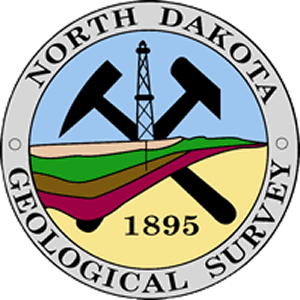
Everyone who has traveled through western North Dakota has noticed the colorful reddish layers and brick-like masses of baked and fused clay, shale, and sandstone that color and shape the landscape.nn13f1.jpg (75931 bytes) These baked materials, known as clinker (or locally as "scoria"), formed in areas where seams of lignite coal burned, producing heat that baked the nearby sediments to a form of natural brick. Clinker beds typically range from a few feet to 50 feet or so thick in western North Dakota, but much thicker beds are found in Wyoming and Montana. 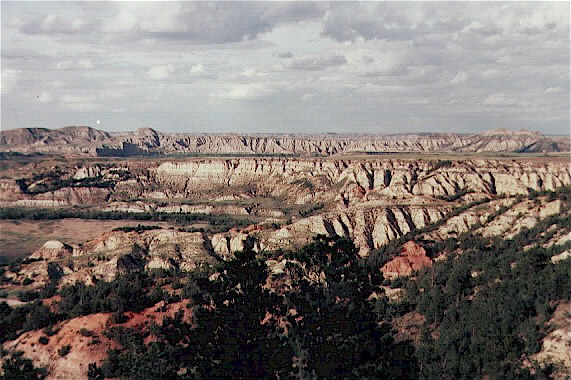 Figure 1. Badlands topography near Medora with (mainly) Bullion Creek Formation exposures. Clinker overlying the Bullion Creek can be seen in the foreground. (Photograph by Ed Murphy) Saw an emence quantity of Pumice Stone on the sides & feet of the hills and emence beds of Pumice Stone near the Tops of them, with evident marks of the hills having once been on fire. I Collecte Somne of the different sorts i.e. Stone Pumice & a hard earth, and put them into a funace, the hard earth melted and glazed the others two and the hard Clay became a pumice Stone glazed. On April 16, 1805, Meriweather Lewis wrote the following: I believe it to be the strata of coal seen in those hills which causes the fire and birnt appearances frequently met with in this quarter. where those birnt appearances are to be seen in the face of the river bluffs, the coal is seldom seen, and when you meet with it in the neaghbourhood of the stratas of birnt earth, the coal appears to be presisely at the same hight, and is nearly of the same thickness, togeter with the sand and a sulphurious substance which usually accompanys it. After Lewis and Clark, numerous explorers mentioned seeing clinker as they traveled through the region. They included Larocque (1805), Catlin (1832), Maximilian (1833), Nicollet and Fremont (1839), Audubon (1843), and Harris (1843, 1845). At least some of these early explorers believed the clinker beds had a volcanic origin. Lewis and Clark had it right though, in their appraisal of how clinker formed. 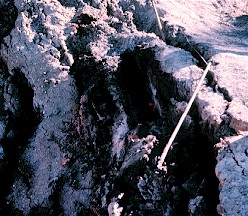 Figure 2. Burning coal seam in the Badlands, North Dakota (Photograph by J. Bluemle). During early October, 1976, prairie fires that burned over several areas of southwestern North Dakota ignited underground lignite seams in at least 30 locations over a 7,000-acre area near Amidon. Although nearly all of the fires were extinguished before the following spring, some of them burned for several months. Again in July, 1988, a number of lignite seams were ignited during widespread fires in the badlands. Some of the lignite fires were ignited by juniper tree roots burning down from the surface into the coal. Over the years, such a large number of lignite seams have burned, over such a broad area, and under such a variety of situations, that it seems likely spontaneous combustion has been responsible for many of the fires. Lignite that contains a high percentage of sulfur is especially prone to spontaneous combustion. 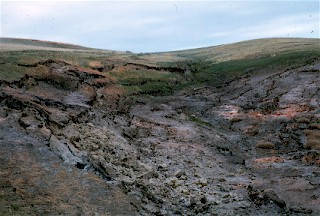 Figure 3. Burning coal seam near Amidon, North Dakota (Photograph by J. Bluemle). When lignite beds burn, they harden, sinter (sintering is a process that fuses material into a hard mass, without melting it), or sometimes they melt the overlying and surrounding rocks. The baking process colors the nearby materials dominantly red, but shades of black, gray, purple, yellow, and other hues are common too. The intensity of the colors depends on the mineral composition and grain size of the material that was baked and also on how hot a temperature was reached during the baking process. The reddish color, which is most common, is due primarily to the presence of the mineral hematite (iron oxide, the same as common rust). The intensity of the colors of clinker also vary depending on whether the material is dry or wet. After a shower, the clinker is typically much brighter red than when it is dry. 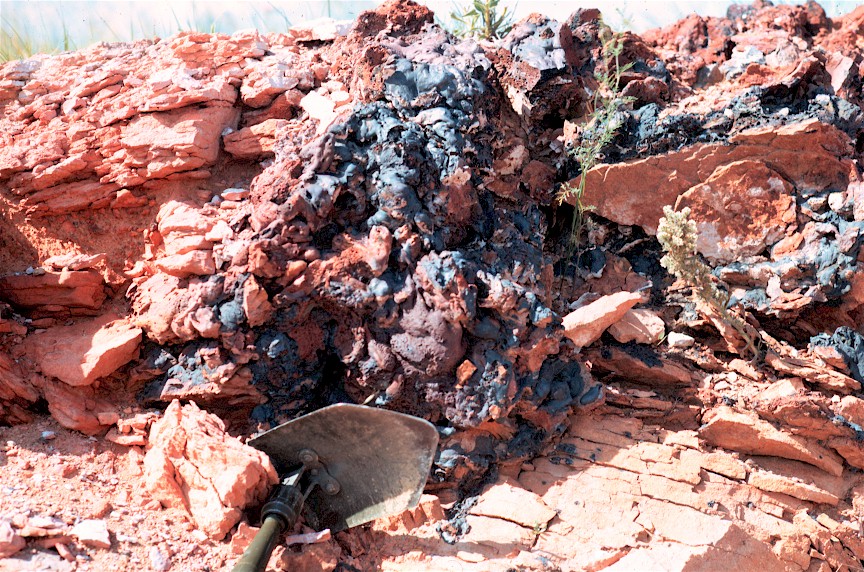 Figure 4. Clinker pit south of Rhame, North Dakota, note the variety of colors present (Photograph by J. Bluemle). 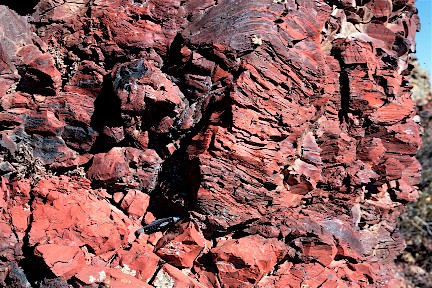 Figure 5. Scoria structure with multiple void spaces (Photograph by J. Bluemle). A side effect of the burning of lignite beds is the way the combustion gases affect nearby vegetation. Air pollution resulting from the burning lignite causes trees like the juniper, which is normally bush-shaped, to grow in a columnar shape. Near Amidon, an interesting stand of columnar junipers grew for many years in an area where a buried lignite seam burned. Since the fire went out, several years ago, the trees have resumed their normal growth pattern. 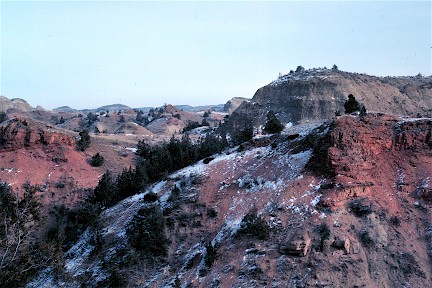 Figure 6. Scoria Point at Thedore Roosevelt National Park (Photograph by J. Bluemle). Collapsed surface overlying a seam of burning lignite near Buck Hill, Theodore Roosevelt National Park. As the lignite burns, it takes up less space and the overlying materials, which may be baked to clinker, collapse into the burned-out space. |